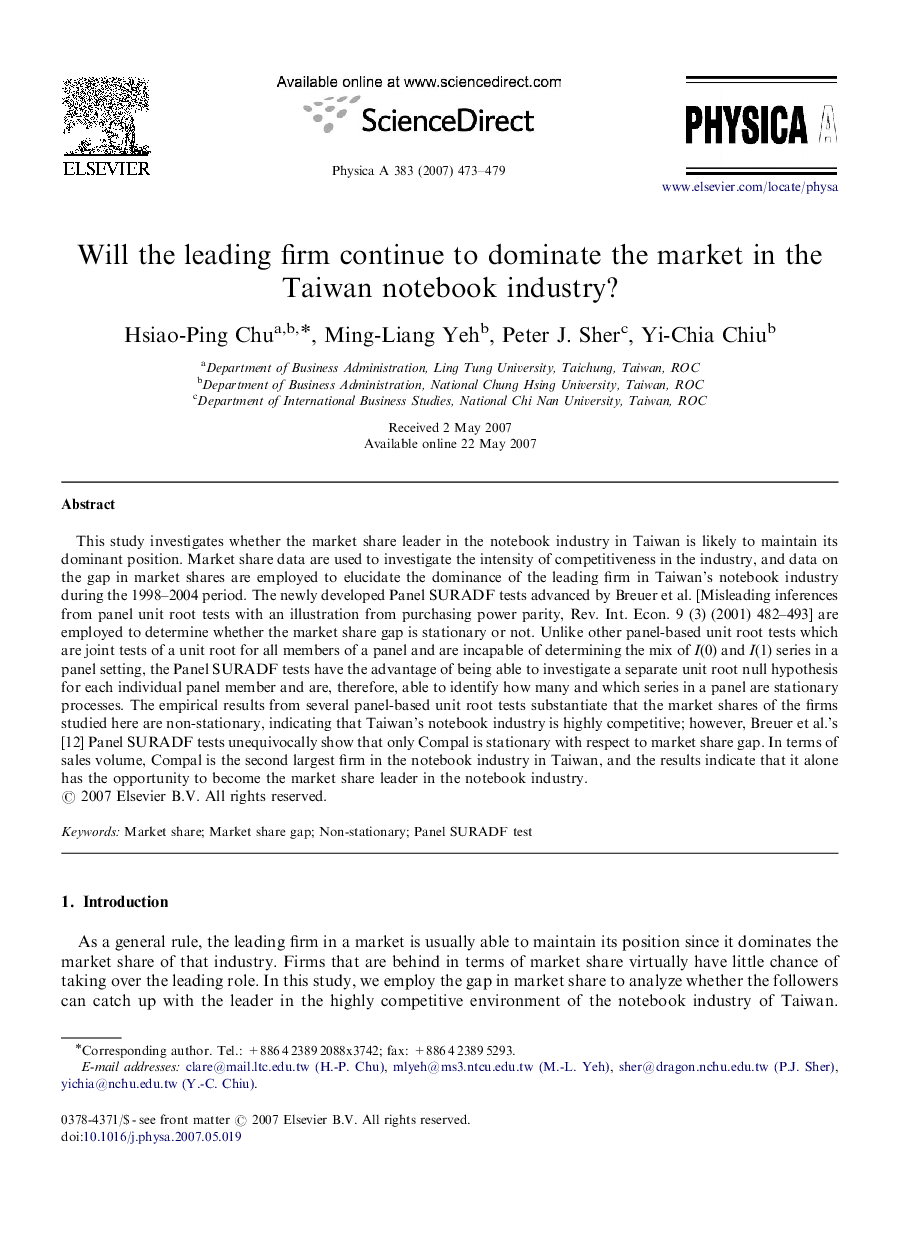| Article ID | Journal | Published Year | Pages | File Type |
|---|---|---|---|---|
| 975488 | Physica A: Statistical Mechanics and its Applications | 2007 | 7 Pages |
Abstract
This study investigates whether the market share leader in the notebook industry in Taiwan is likely to maintain its dominant position. Market share data are used to investigate the intensity of competitiveness in the industry, and data on the gap in market shares are employed to elucidate the dominance of the leading firm in Taiwan's notebook industry during the 1998-2004 period. The newly developed Panel SURADF tests advanced by Breuer et al. [Misleading inferences from panel unit root tests with an illustration from purchasing power parity, Rev. Int. Econ. 9 (3) (2001) 482-493] are employed to determine whether the market share gap is stationary or not. Unlike other panel-based unit root tests which are joint tests of a unit root for all members of a panel and are incapable of determining the mix of I(0) and I(1) series in a panel setting, the Panel SURADF tests have the advantage of being able to investigate a separate unit root null hypothesis for each individual panel member and are, therefore, able to identify how many and which series in a panel are stationary processes. The empirical results from several panel-based unit root tests substantiate that the market shares of the firms studied here are non-stationary, indicating that Taiwan's notebook industry is highly competitive; however, Breuer et al.'s [12] Panel SURADF tests unequivocally show that only Compal is stationary with respect to market share gap. In terms of sales volume, Compal is the second largest firm in the notebook industry in Taiwan, and the results indicate that it alone has the opportunity to become the market share leader in the notebook industry.
Keywords
Related Topics
Physical Sciences and Engineering
Mathematics
Mathematical Physics
Authors
Hsiao-Ping Chu, Ming-Liang Yeh, Peter J. Sher, Yi-Chia Chiu,
